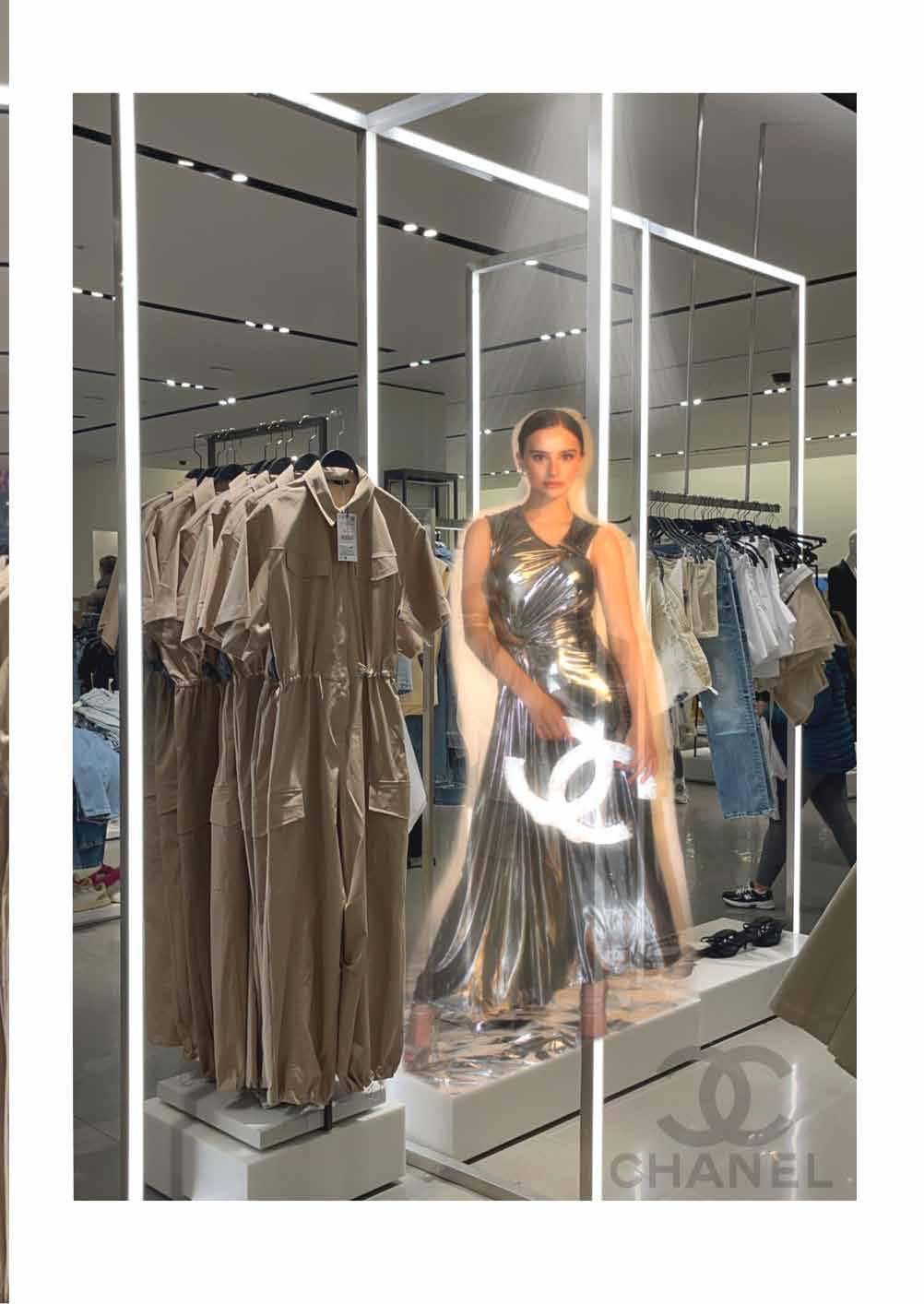



To further communicate my campaign narrative of introducing Generation Z to the possibilities of digital fashion providing a potential soultion for reducing overconsumption, I researched into the impact of marketing campaigns and the different methodologies that are used within fashion to communicate brand messages. My research into impactful marketing campaigns allowed me to understand the importance of communicating a brand story across multiple channels to generate a stronger connection between a brand and their targeted consumer. The concept of visual merchandising both instore and online creates the ability to visually engage an audience with your brand, product or service, most likely resulting in the consumer feeling a closer connection to a brand. Even though the fashion industry is moving towards a more digital and Metaverse inclined space, I feel that it is still important to create consumer experiences in a physical presence aspect also, to further ensure brands can maximise the markets reached when releasing their newest marketing campaigns and product releases. The concept and nature of my final major project is heavily focused on introducing a youth audience to the world of digital fashion, from incorporating digital clothing into the everyday wardrobe, to making the luxury market more accessible and readily available to younger generations with less disposable income. The idea of creating a fusion between the digital fashion genre, through the creation of digital Non-fungible token clothing pieces, and then visually communicating this concept within a physical instore visual merchandising presence I think reinforces my brand narrative to reaching wider audiences, whilst also providing immersive and engaging physical experiences for my consumers, as well as virtual.

Creating a visual merchandising installation across both Zara and Chanel stores helps to further extend the campaign narrative of ‘Youth Diversion’. My research and understanding of visual merchandising has allowed me to identify the benefits of exploring different types of visual fashion communication between a brand and a targeted consumer to amplify a concept story beyond text and verbal communication. My FMP concept of exploring the new potential ways of marketing and fashion communication through Metaverse capabilities such as digital hologram creation, virtual avatar modeling and creating immersive consumer activities can really help to extend a campaign concept through making an interactive connection with a consumer. As well as combating issues regarding sustainability within the fashion industry, exploring virtual and digital fashion opportunities as an alternative, my ‘Youth Diversion’ campaign also aims to highlight and communicate the issues regarding the luxury market being out of touch with younger audiences. This concept inspired my campaign to explore new ways of bridging this disconnent between luxury market brands missing out on connecting to a wider audience, potentially loosing their relevancy as these up and coming generations start to buy into new markets. My choosing in selecting both Chanel and Zara as my collaboration partners aims to connect the luxury out of touch market (Chanel) with a readily engaged youth audience, Generation Z, who are demonstrating an interest into buying into affordable luxury (Zara). My research into Zara’s targeted consumer profile and my research into the shopping habits and brand demands from Generation Z as a whole signposted my into creating a campaign that was positioned within the affordable luxury market. As a result of this concept, I felt that creating a visual merchandising campaign presence in a real-life and physical store setting would better introduce my campaign concept to this younger audience initialy, as Zara’s consumer profile in particular is majority Generation Z and the younger segment of Millenials. This selection of consumers would then be able to experience an introduction into my campaign concept from an engaging and physical point of view, aiming to further bridge the gap of luxury market fashion being out of touch for these audiences.



Having a physical visual merchandising installation within both Zara and Chanel stores also aids in visually communicating my campaign story to wider and previously untouched audiences. The idea of visually displaying my collection in the form of creating digital fashion NFT’s (non-fungible tokens) displayed through interactive holograms aims to first hand showcase the Metaverse possiblities I’ve aimed to explore when creating my campaign. Not only creating a digital NFT collection of clothing, but also choosing to communicate this narrative to my target consumer through further exploration of digital hologram simulation, I believe this extended act of marketing further brings my campaign to life, and adds a physical presence to my digitally-focused creations. My research into digital fashion allowed me to understand that for many, the idea of digital fashion exploration and brands incorporating non-physical clothing into their product catalogue feels so far advanced and fictional, almost as if consumers don’t believe these innovations could turn into a genuine reality. That’s why I wanted to explore incorporating a digital hologram display of my NFT collection in physical stores also, as well as creating a social media campaign. I feel that having a physical presence could further entice and attract youth consumers into buying into the new wave of digital clothing, adding their own contribution to improving the sustainability issue within the industry. As a result, my ‘Youth Diversion’ campaign symbolises the capabilities of digital fashion innovation reaching new audiences, creating new consumer experiences and ways of shopping through the use of exploring new innovational concepts that brands can engage with. Not only reach new markets themselves through technology advancements, but also contributing their part in helping resolve issues within overconsumption within all market levels of the fashion industry.




























